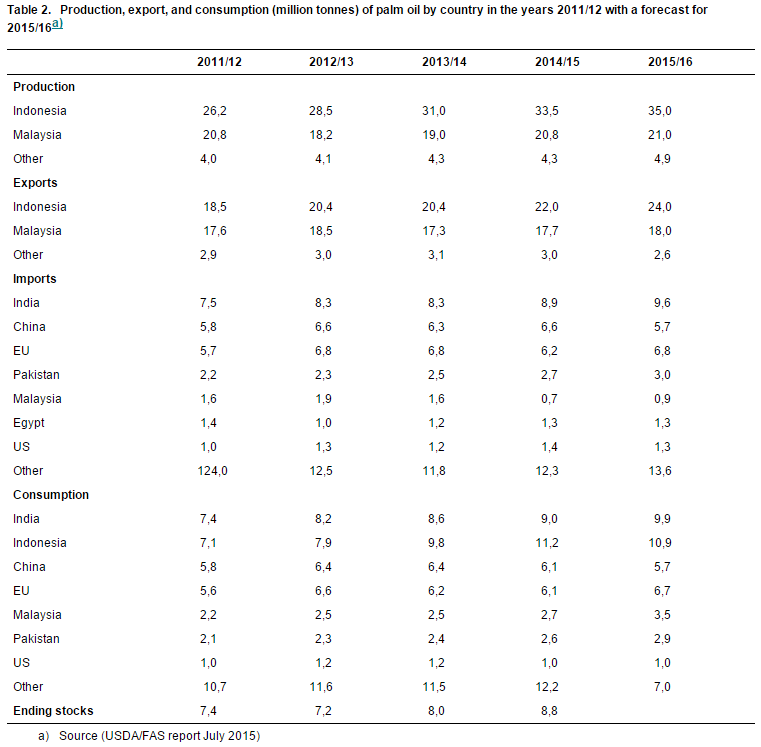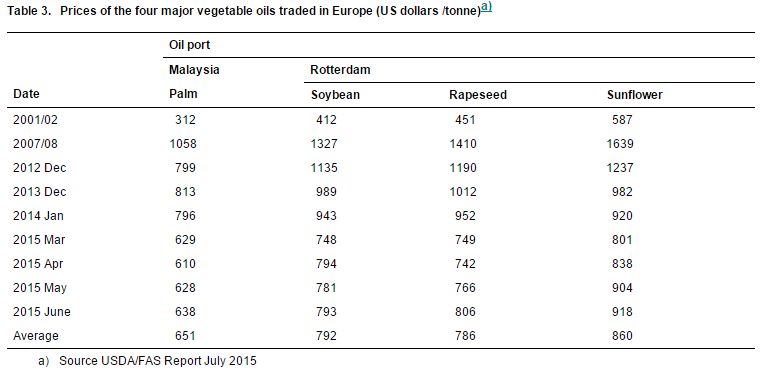Palm oil and palm kernel oil are derived from the African Oil Palm, Elaeis guineensis. This plant has been used for its oils for thousands of years due to its large bunches of fruits, with both the mesocarp of the fruit and its seed rich in oils. In the past few decades, the African Oil Palm has risen to become a major cash crop. This huge increase in production and trade has been driven by the fact that its oils have high nutritional value and is also highly saturated, a quality that is rare in plant fats, making it ideal for deep frying processes as well as the production of margarine and shortening, among many other things. Probably the biggest factor in palm oil’s popularity is that it is also one of the cheapest oils, due to the incredibly large yields produced per plant at 3.69 tonnes/hectare, by far the highest yield of any oil producing plant, making its presence nearly ubiquitous in the products found in supermarkets around the world. The scope of palm oil’s uses also extends beyond just food and has made its way into non-food items such as soaps, conditioners, cosmetics, and lotions.
Production of palm oil has become a major economic staple in many East Asian countries. Indonesia is currently the world’s largest producer of palm oil, at an estimated 35 million tonnes in 2015, and is expecting to double their production by 2030. Coincidentally, Indonesia is also leading the world in deforestation, having lost almost twice the amount of forest than Brazil by 2012 (840,000 hectares vs 460,000). To learn more about the problems of biodiversity caused by palm oil, please see this critical abstract on a study on the effects of palm oil plantations on biodiversity. Interestingly, in the study, it is noted that although the area of oil palm plantations in Indonesia increased from 4.4 million hectares to 6.1 million hectares from 1990 to 2005, yet the total forest loss was 28.1 million hectares, suggesting that something else may be the culprit.
(Gary List, 2015)

